“If we lose the amp-making business, we lose everything. We’ve got to go back and show the guitarist community that Marshall truly cares about them”: From digital amps to modelers and mods – Marshall’s new CEO has big plans to win back guitar players
Jeremy de Maillard has gone from Marshall headphones to the head of the iconic amp firm – now he’s tasked with raising a sleeping giant
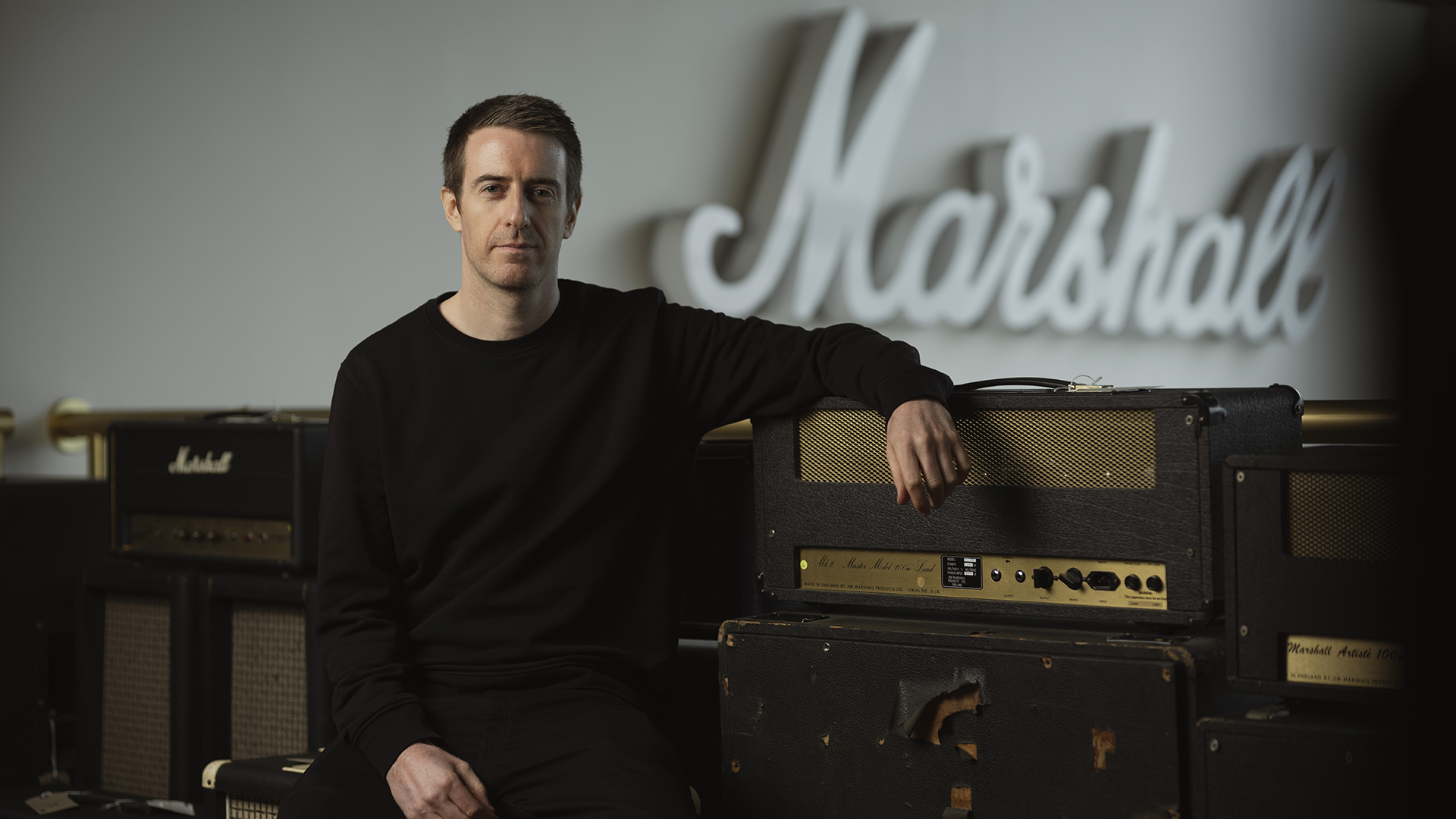
Marshall Amps is positioned behind only Fender and Gibson when it comes to iconic brand names among guitar players. The black tolex, white piping and gold panels of the amp stacks that backed the likes of Jimi Hendrix, Eric Clapton, Pete Townshend, Angus Young, and Slash are as embedded in guitarists’ collective subconscious as the Strat or Les Paul.
It is the amp that Spinal Tap’s Nigel Tufnell declared ‘goes to 11’, that Townshend thrust headstocks into and from which Eddie Van Halen summoned the Brown Sound.
I’ve come to visit Marshall’s UK base – in Bletchley, Buckinghamshire – largely because of that heritage, but also because, since its takeover and subsequent rebranding as the Marshall Group last year, the firm founded by ‘the father of loud’, Jim Marshall, has been conspicuously quiet.
The merger was announced last year and saw the company formerly known as Zound Industries – the producer of the enormously successful Marshall-licensed headphone and home audio products – buy out the controlling interest in Marshall Amps.
Judging from my conversations on the factory tour and a palpable buzz about the building, it seems to have been an amiable takeover, but some players are worried about what it means for the amp-maker.
Indeed, Zound had fared so well making Marshall-licensed listening products that in the newly combined Marshall Group, amp sales made up just 5% of its total annual revenue in 2023 – the rest was its music listening side.
In the meantime, the amp-making wing had been doing what it had always done – building great, handmade tube amps (or ‘valve amps’, in the local parlance) out of Bletchley and solid-state practice combos offshore.
Get The Pick Newsletter
All the latest guitar news, interviews, lessons, reviews, deals and more, direct to your inbox!
So what is Marshall going to do to win back players in 2024? Well, that’s the reason I’m here. To ask exactly that of new CEO Jeremy de Maillard
The problem is the music industry has not done what it has always done in that time. It has changed immeasurably – and so have players. Turn up to a gig with a stack in 2024 and the sound engineer will start frowning.
Meanwhile, we’ve had the rise (and rise) of floor modelers, boutique builders, lunchbox amps, pedal amps, plugins, silent stage solutions and killer digital practice options.
So what is Marshall going to do to win back players in 2024? Well, that’s the other reason I’m here. To ask exactly that of new CEO Jeremy de Maillard.
De Maillard was raised in the French alps, amid the music-laced snowboarding and skating scene of the ’90s, before he stepped into working with brands like Vans, Adidas and eventually, in 2020, joining the Sweden-based Zound Industries.
He is not a guitarist. But neither was Jim Marshall – and, nor for that matter, were all manner of great guitar industry execs from Leo Fender to Ted McCarty – so, for once, I don’t care too much about that. It might even be an asset.
What I do care about – as a player and career guitar journalist who grew up 30 minutes down the road – is whether or not de Maillard ‘gets it’. If, given his background, he understands why Marshall matters to guitarists and if he is willing and able to follow through to produce what players want – nay, need – from the brand in 2024.
On the basis of our conversation, the answer seems to be a resounding ‘yes’…
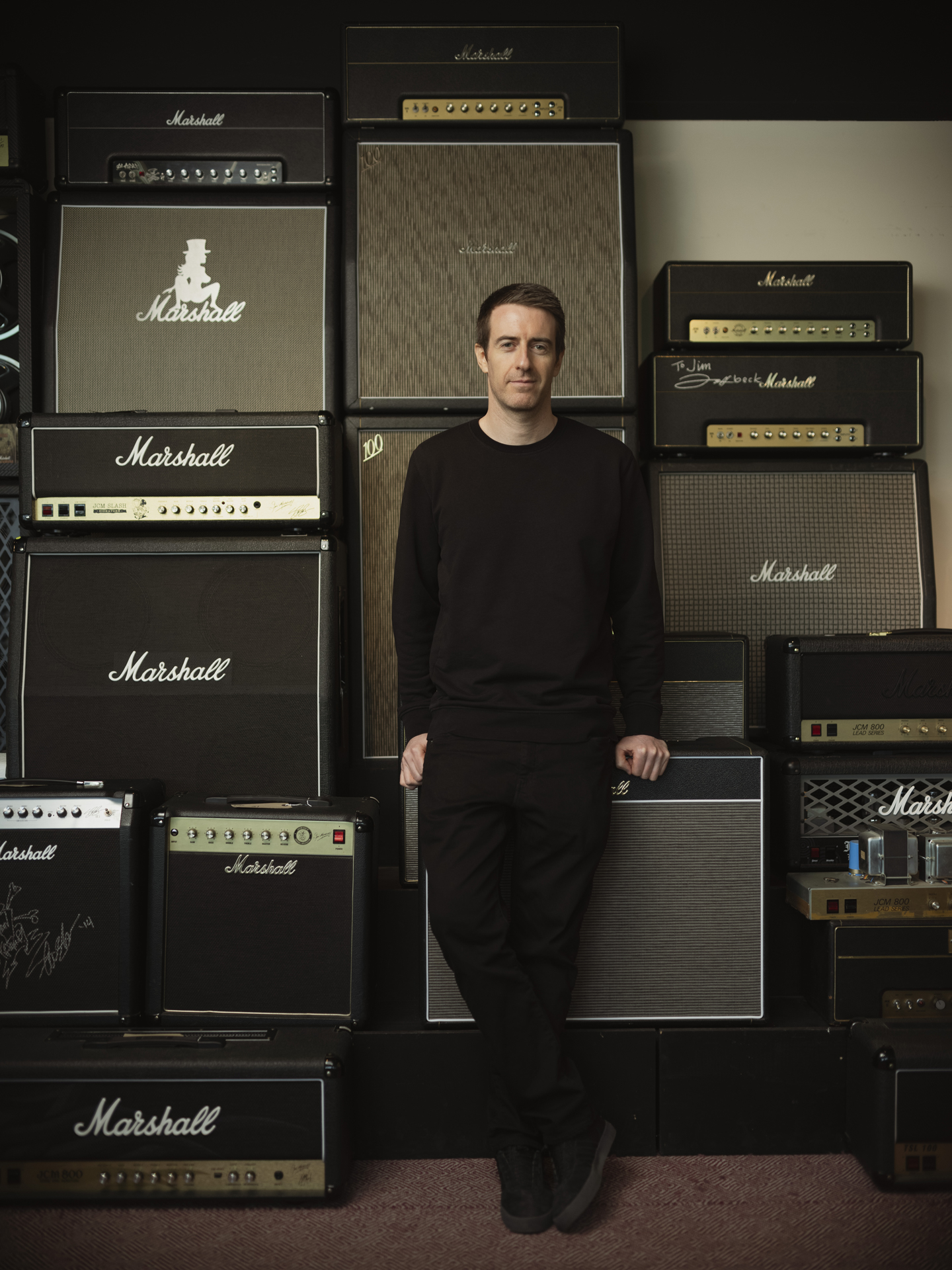
You had a successful working relationship with Marshall on Marshall headphones already. What was the appeal of the merger with the amp firm?
“For us, this is just an immense opportunity to look at everything holistically from the get-go. All the talent and the power that we have with these two companies. You’re looking at one of the most iconic brands in the world, coming together with a company [Zound] that has the capability to bring new products to an audience on a global level, in a very authentic way – without diluting the brand, ever.
“So the excitement for us is to now be able to say, ‘Okay. How do we make sure that everything we do on the amps side for guitarists connects to what we do for a wider audience [of music listeners]?’
We strongly believe that this is the heart and the soul of the brand. We have to do the right thing for musicians and guitarists first
“We talk about musicians and music lovers. So how can we make sure, which we could not really do in the past, that as the business grows, we can reinvest even more [to the original brand] to do more for the musicians?
“Because we strongly believe that this is the heart and the soul of the brand. We have to do the right thing for musicians and guitarists first, and when we do this, we have permission to go and do more [on the listening side] – and then reinvest more.”
It's been a year since the merger was announced. You've had some time to get to know Marshall ‘warts and all’. What have you learned about the amp-making side since it became your responsibility?
“Well, I think first of all, it's getting a true understanding and appreciation for how talented the people are here, when we got deep into the factory. You see these people here and, to me, this is the highest level of craftsmanship that you can have.
“I draw the parallel with, like, Swiss watches, or high-end leather goods. These are the people that are just the best at what they do, whether it's the woodwork, or the covering, or the engineering – they're just amazing. And they're so proud of what they do.”
Yes. I really felt that on our tour today.
“It's pretty special, right? I mean, I've done that tour maybe 10 times now. I can't get enough! If there's a tour, I join it! We're just so in love with this. And I think already, since the acquisition, we probably invested more in the past eight months into the UK factory than the investment that went in there for the past 10 years.”

And where has your investment been directed?
“Mainly machinery and new tools. Everything they wanted. We came in and asked the factory, ‘What do you need?’ Then the studio had been really well taken care of before our time. But when we came, it was like, ‘What else?’ What do you need to make these the best facilities for either making products for guitarists or for the recording studio? And we just went, ‘Yes.’”
Most of your previous interviews have addressed the opportunity for the Marshall Group in the $100 billion home audio market. That side of the business is clearly thriving, but how do you view the potential of the amp market?
“I think it's really big. Much bigger than what we have today, let’s put it that way. We have a huge opportunity to elevate our product portfolio – and evolve it, as well. So there are two things that we're very clear on.
We don't have all of the products that the guitarist today expects of us... And here we are over-investing as well, to be fair, to catch up
“Number one: we will forever cherish the valve, handmade, analog product that we have – and will continue to over-invest in this, even if it's not the biggest part of the business. That will be first and foremost. We will never let go of that. That is protected in a way that is really, really strong.”
Guitarists will be very pleased to hear that.
“It's beyond protected. All of the investment we've made here is to make that better. It's all about that at the end of the day. But at the same time, [the second thing we’re clear on is that] we don't have all of the products that the guitarist today expects of us, when it comes to digital amplifiers, or digital products, in general. And here we are over-investing as well, to be fair, to catch up. We've been behind and now we want to catch up.
“Our goal is to provide to guitarists the best possible Marshall experience – no matter what their needs are. If you're into valve, analog amps, we got you. But if you want a practice amp, or digital, desktop – or whatever [option] this might be – we're going to be there for you as well. Just give us a little bit of time, because I wish we could create products in one month, but it tends to take a year or more.
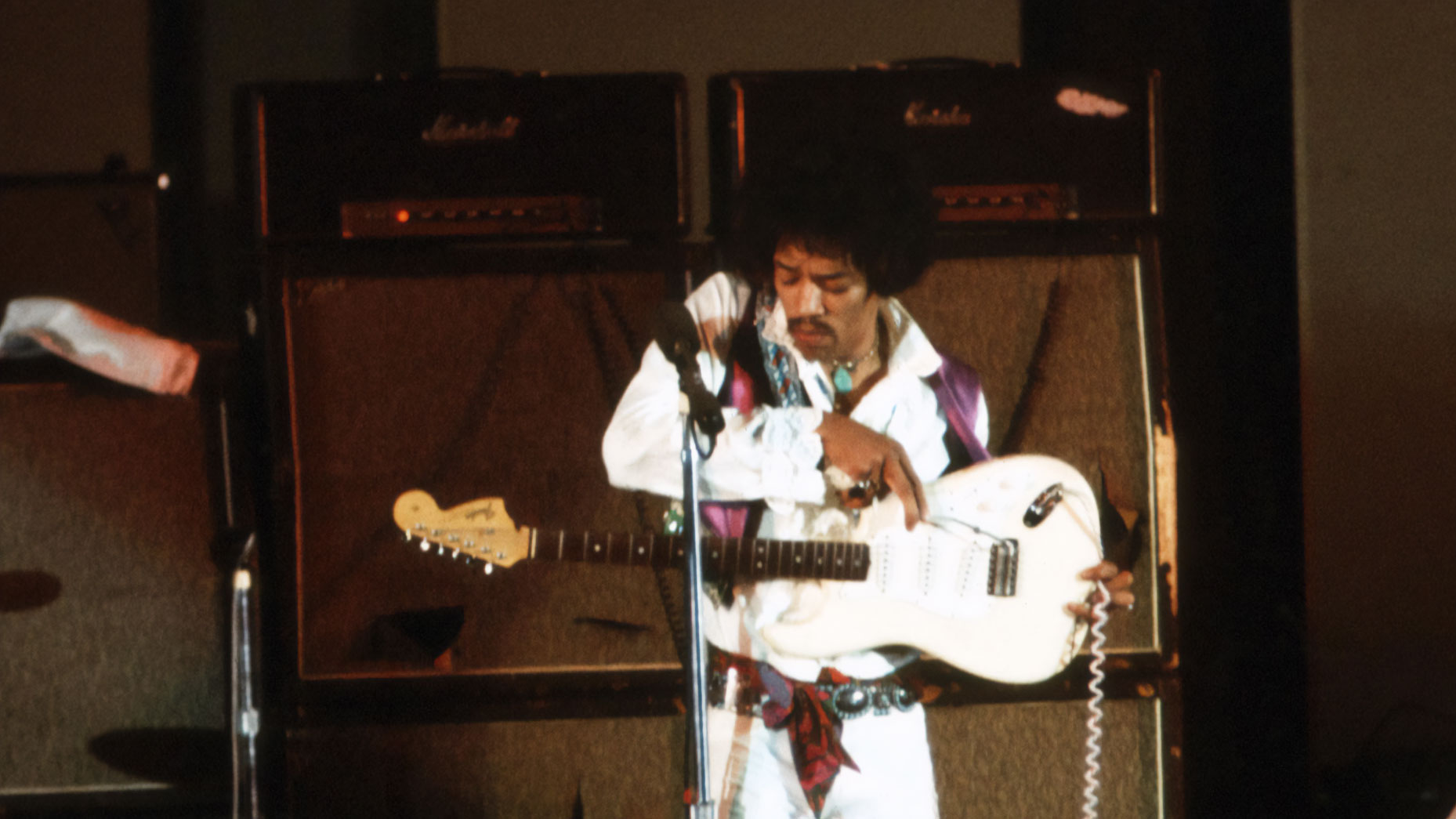
“You're going to start seeing some things in the next 12 months. But I think in the next 12 to 24, you're really going to start seeing what we're about here. I'm super-excited about this because everything we hear every time we talk to the guitarist community is that they love the brand – and they just wish they could use the brand, in all of the occasions that they have to play guitar. That's really what we’re after.”
I spent some time on Marshall forums ahead of this interview and I think the opportunity of the merger is recognized by Marshall fans. However, the fear among guitarists is that you've got a very profitable music-listening business, so is it really worth your while looking closely at the amp side – and investing in and championing that side?
“The answer to this is so simple: being able to run that faster-growing, very profitable business on the listening side allows us to over-invest on the musician side, which we would not be able to do if it wasn't for the Marshall Group creation.
We've got to go back and show the guitarist community that Marshall truly cares about them. To listen to them
“Now that money can be reinvested there. Because, again, we are convinced that, if we lose this [the amp-making business], we lose everything. So that's what we're going to cherish first and foremost. That cannot go away.
“We've got to go back and show the guitarist community that Marshall truly cares about them. To listen to them. We are on those forums as well. They keep us honest – and I love it. It's like, 'Hey, tell us!' right? No filter! We take it in. We're very self-aware of the things that we can do better – and we're working hard on it.”
So what is the first step in that? There's a big checklist of wants for guitarists: whether it’s better software, better digital amps, something that crosses the line between the Bluetooth speaker and the home amp, modeling solutions…
“Well, I don't want to give away too much. But I would say all of the above that you just mentioned is in the plans! Literally, everything you just talked about. So we want to do all of this.
We've got to go back and show the guitarist community that Marshall truly cares about them. To listen to them
“The way we work when we make products – and I think that it has been true before the acquisition, whether that was on the amp side, or the listening side – is that we will never put a product out there that we are not proud of and would not recommend to our friends and family. That's the bar.
“So we are looking at all of the above that you've mentioned. Funnily enough, you hit on most of them, already. But the order in which they're going to come is going to depend on our ability to get them to the level that we are proud of.
“Some things were launched last year, like the Studio JTM, for example, so you can expect more of that [for a start]. So taking the iconic valve amp and doing a Studio version of that, you're gonna see these fairly quickly.”
What about the prospect of IR integration? Or a Marshall cab-style full-range, full-frequency speaker that you could use with a modeler? Something that gets the Marshall stack back on the stage.
“We're considering all of those things – and I think we're trying to find the right balance on like, ‘What could be a quick win that shows the power of us coming together?’ But we will only go after those quick wins if it's on the level that we're proud of, so we’re exploring many things like this, whether for beginners or practice, all the way to the stage.”

You mentioned the prospect of more Studio Series builds. Are there any other new tube products in the mix? Or is it purely securing the legacy – and keeping things steady – on that side?
“I think it's both. As the Marshall Group, our responsibility is to build the next 60 years of the Marshall legacy. We have all of these legendary amps and heads and combos and cabinets, but we need to start creating new ones as well, so it's going to be a mix.
We asked all the passionate guitarists that we have across the organization: 'If you could have a dream portfolio of Marshall products, what would it look like? Blank page’
“It's going to be taking care of the portfolio that we've had, and all the products that have existed throughout history – and that could be a certain selection that are always available to purchase, or some that we can reintroduce for a limited amount of time and then bring back another one, perhaps for an anniversary.
“But then we’re also looking at at creating new ones [and asking] what's a valve amp today? What should that look like?”
I wondered what your opinions were as well on the cottage industry that's grown up around modding Marshalls over the years – and filled a gap that Marshall itself hadn’t. Have you got any plans to bring that back [under the Marshall brand]?
[De Maillard and Marshall's Head of Culture Steph Carter, who is present during the interview, exchange a glance.]
You're smiling, like it's gonna happen…
“We are working on this.”
So there will be options for in-house mod builds?
“We're working on this.”
Well, this is all very exciting...
“We took a very humble approach. The team here know everything about amps, and we asked them, together with all the passionate guitarists that we have across the organization: 'If you could have a dream portfolio of Marshall products, what would it look like? Blank page. From the legacy [products] to all the stuff that you've never talked about before, what would you have?' And mods came very early into that conversation.”
And were you going to artists with that conversation? Are there any artists that you've been talking to in terms of development?
“We're looking at a couple of things. [Firstly] we're looking at really reestablishing and strengthening the relationships with all of the people that have been part of Marshall for the past 60 years. How do we really make sure that we have an open direct conversation, and that we can make sure that we honor this legacy?
“And then how do we look at the guitar world today, and all the key artists and make sure that we are present – from, you know, the 'guitarist’s guitarists’ to the ones who are on stage, to the ones that are coming up. How do we find the balance between all of these elements?

“We've started to strengthen and rebuild those relationships and show our intent. It very much comes together. I mean, when was the last signature? 2013?
[Steph Carter, who also handles Artist Relations, confirms it was indeed the Joe Satriani JVM in 2013].
“So [again] we've got some catching up to do. And we're very open to bringing that back, but it needs to be meaningful and just right.”
One of the things I've noticed about Marshall in 2024 is that the listening side is widely embraced by a younger demographic, but the actual amp-maker is not. It’s become increasingly rare to hear a new artist say, 'I use a Marshall.' How do you address that?
“I think it's both sides. It's considering our work on the product portfolio – and bringing this, as quickly as possible, to where we want it to be – and then reconnecting with the artist community to make them part of that journey.
Marshall has never been about Marshall; we've always been a catalyst for people to to amplify their voices. That's why we've been there. Whether that was Jimi, or Eric, or Pete, or Slash
“To us, that's the thing: Marshall has never been about Marshall; we've always been a catalyst for people to to amplify their voices. That's why we've been there. Whether that was Jimi or Eric or Pete, or Slash – we've been there to amplify their voices. And so we need to listen to them. And we want them to be part of this. We want to reopen those doors and really welcome them back in, so they can help us shape it as well.”
Does Marshall need to attract new players to maintain the brand?
“We always do. If we don't do that, you know, who's going to be there 60 years from now?”
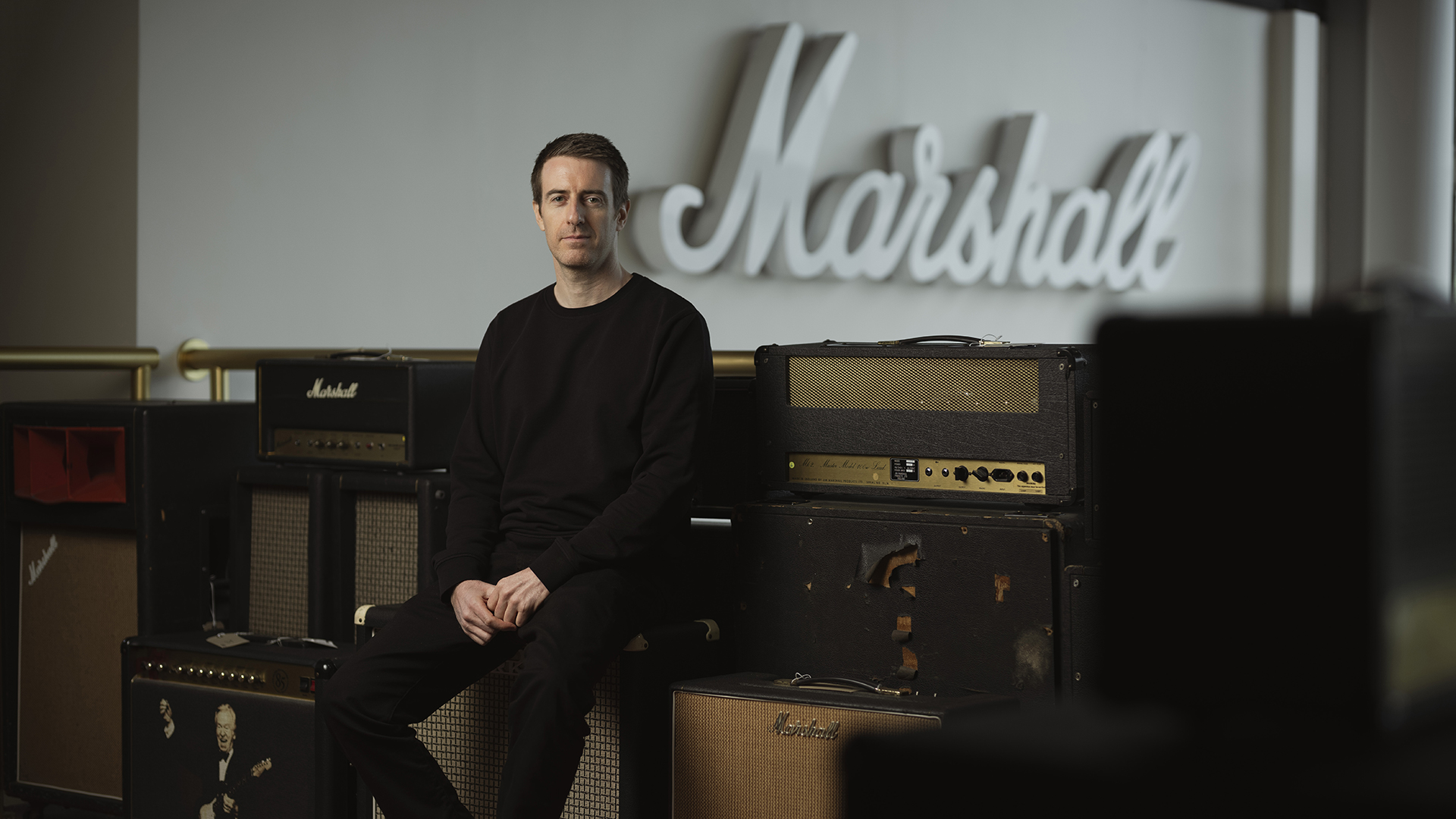
And what would you say to those players – the forumites – who say Marshall's not an amp brand anymore, because of the disparity between the two sides’ revenue?
“We love those forums. It makes us better. I want that energy. Whatever is negative, it comes from a good place, and it's our job to take this and turn it into a positive. So one thing I would say [to those people] is keep typing. That's important to us.
“And then think about the big picture of things: now that we are the Marshall Group, now that we are doing well, just see it as one thing. Whatever money we make, that's more money we have to spend on what really matters, which is the musician and the guitarist product.
“So the more successful we are as a company overall – whether that's with the music lovers, or with the musicians – the more we're able to sustain and invest in doing all those things in a much bigger way than was possible before.
We're able to invest in a much bigger way than was possible before. And, if you look at the spectrum of amp companies, there's not many that will be able to do this
“And, if you look at the spectrum of [amp] companies, there's not many that will be able to do this. The world is changing fast, and things are going quickly. It takes capital and it takes investment to stay relevant.
“Now, we have some catching up to do. Today, we are not where we want to be with the musicians and the guitarist. And we are working and investing as hard and as fast as we possibly can to show that we belong here – and we're going to come back.
“But creating a new product takes time, and we will never compromise on the quality because we are the stewards of this brand – and we will never put Marshall products out there that are not up to standard.”
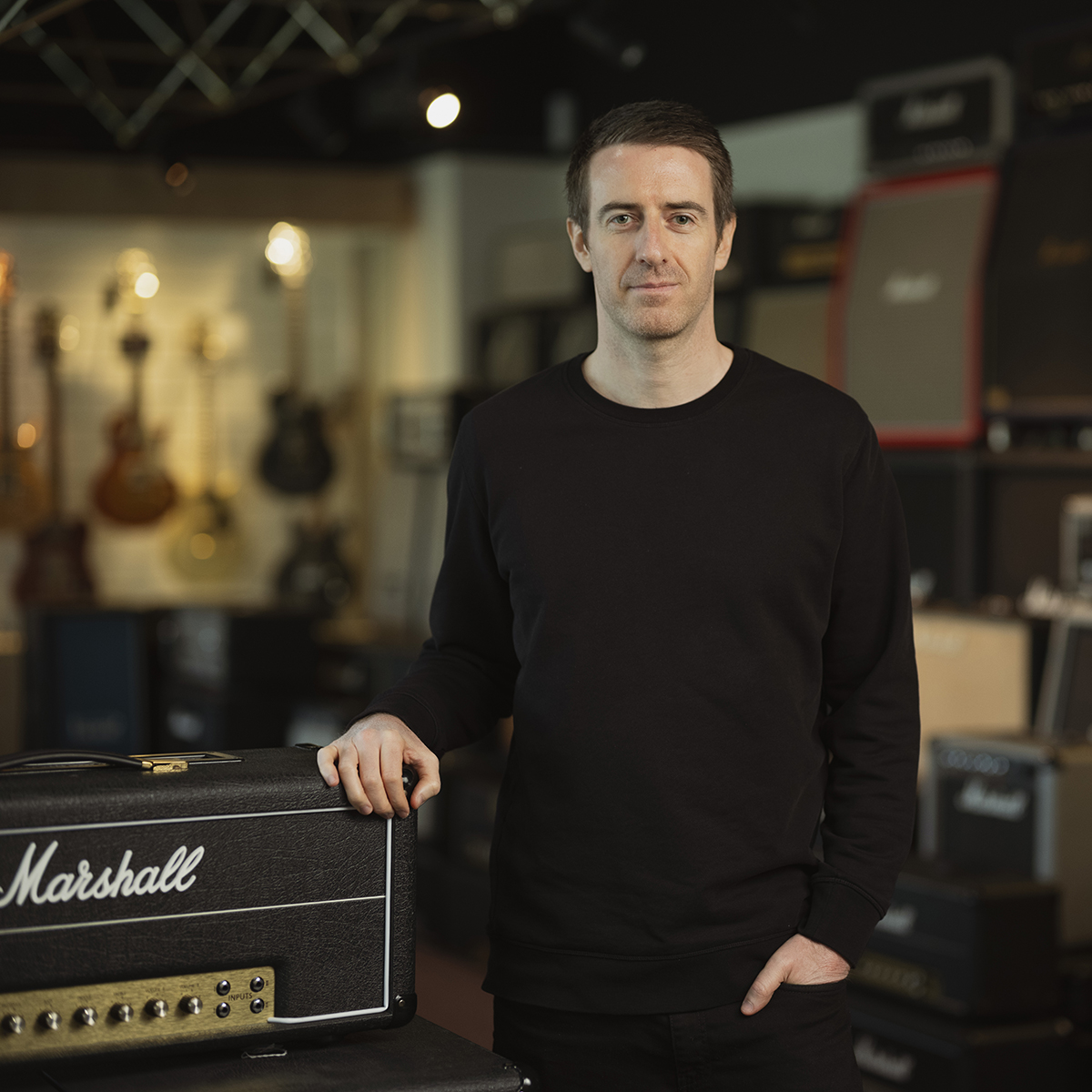
So the message is: ‘We get it, but give us a minute.’
“Yeah – and in the meantime, keep going [with the feedback]! We feed off that. There's a lot of things we want to catch up on, but the big focus right now is on the amps.
“We've got a great roadmap on the listening side of products and everything. That's going strong as well. But here [on the amps] we are over-investing to catch up – and we are very conscious of this.
“The other thing I would say is embrace it both ways. It’s exciting to see a younger generation today – one that did not grow up seeing walls of Marshall amps on stage – see a Marshall headphone and just think it's cool.
“Then they start to understand why it's cool and start getting those stories from their friends. Like, 'Holy shit, this is a Marshall thing... Do you know that brand?' And when we do that it also brings more people [to the guitar], which is really important. For me, it's an opportunity to get more people to love what we love.”
- For more updates, keep an eye on Marshall Amplification.
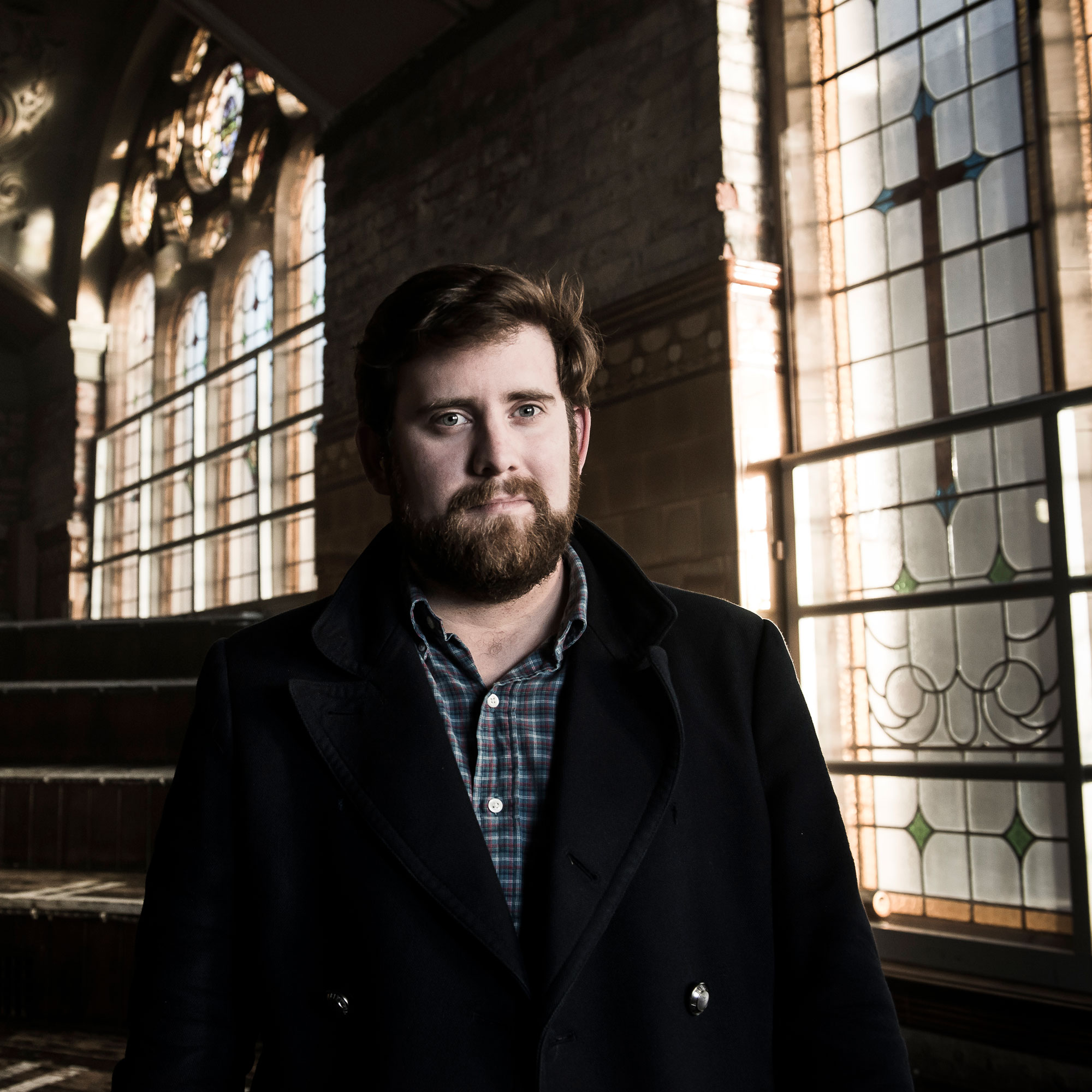
Matt is Deputy Editor for GuitarWorld.com. Before that he spent 10 years as a freelance music journalist, interviewing artists for the likes of Total Guitar, Guitarist, Guitar World, MusicRadar, NME.com, DJ Mag and Electronic Sound. In 2020, he launched CreativeMoney.co.uk, which aims to share the ideas that make creative lifestyles more sustainable. He plays guitar, but should not be allowed near your delay pedals.
“The nuisance is exacerbated by the repetition and poor quality of some of the performances”: Buskers banned from London’s Leicester Square as performances likened to “psychological torture”
“It went wrong since Corona”: Bax Music, one of Europe’s largest musical instrument retailers, files for bankruptcy and ceases operations


![A black-and-white action shot of Sergeant Thunderhoof perform live: [from left] Mark Sayer, Dan Flitcroft, Jim Camp and Josh Gallop](https://cdn.mos.cms.futurecdn.net/am3UhJbsxAE239XRRZ8zC8.jpg)







